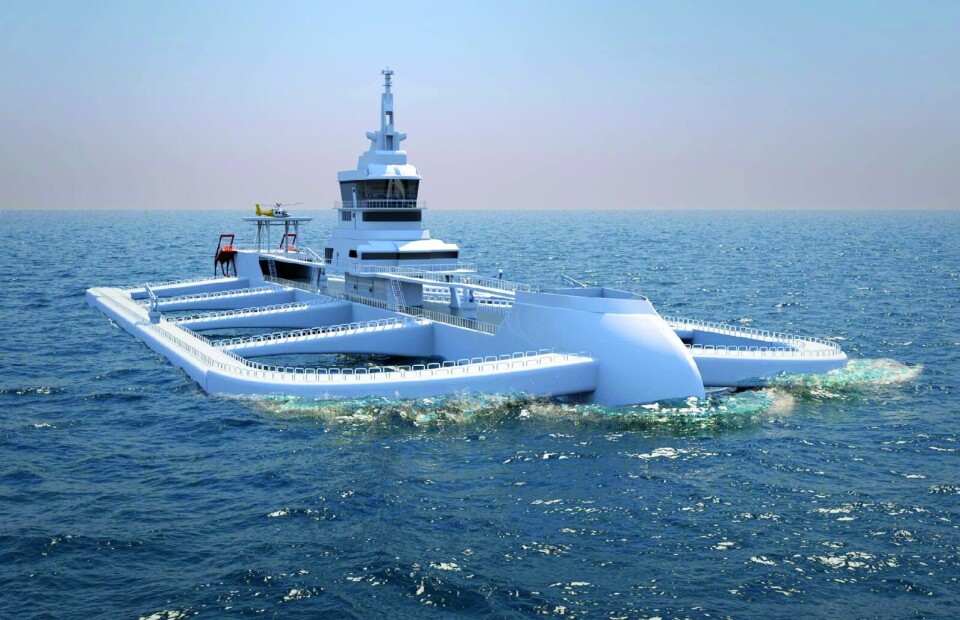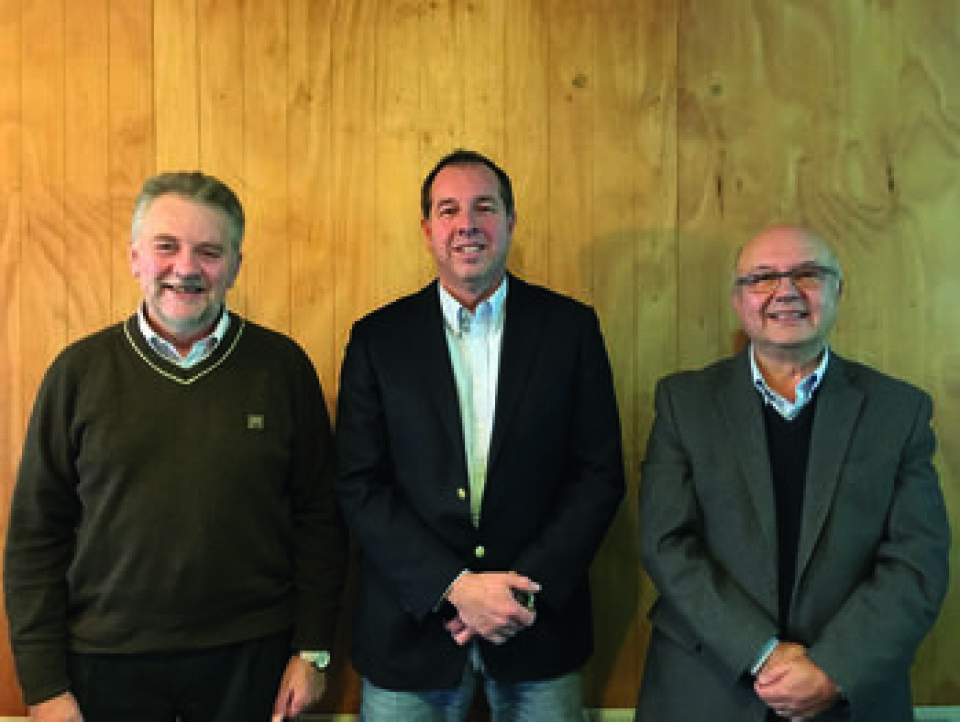
‘Ark’ fish farm designers seek investors to get on board
The creatures on Noah’s Ark went in two by two, but those that inhabit a new Chilean-designed ark will go in by the thousand.
The Ocean Arks Tech, or Arca de Cultivo, is a ship-based fish farm designed to boost aquaculture on a global scale. And what started out as a rough sketch in the summer of 2017 has now been refined into a 170-metre trimaran that can cruise the sea for the best growing conditions and hold 3,900 tonnes of salmonids or other fish in copper-alloy nets.

The system is designed for operations on the coast, in Chile’s Exclusive Economic Zone that extends 200 miles from the shore, and on the high seas, where it is able to seek the best water conditions for the fish, “improving profitability for producers”, according to its creators.
The promoters of the project are Rodrigo Sánchez, manager of a copper net factory in Chile; Cristino Stange, a fish farmer and aquaculture entrepreneur with more than 40 years’ experience; and Héctor Ruiz, a retired Chilean Navy captain.
In addition, other experts have been brought in to add their knowledge and help the trio overcome the various hurdles encountered before arriving at a competitive and efficient design.
‘Versatile structure’
The vessel has been designed for the cultivation of salmon, trout, tuna, seriola or cobia. “Ocean Arks Tech is a versatile structure, which can have one, four or eight cages. In 24 months, two salmonid culture cycles can be carried out, one of the main advantages compared to traditional aquaculture in Chile,” say the promoters of the initiative.
For its creators, the execution of this project means a strategic advantage for Chile.
“We will not be mere observers, but participants and world leaders in employment on the high seas. This project means a competitive improvement for aquaculture. Man uses the sea to advance, and this project is the prolongation of the tremendous effort that has been made on the coast,” they add.
The ship is designed to be constructed in naval steel.
“The materials can be optimal and in line with the new naval constructions, but it is in direct proportion to what the client wants to invest,” the project's promoters detail.
The design contemplates the use of copper-alloy nets, the main advantages of which would be to avoid maintenance, net replacement, frequent cleaning and the need for anti-predator nets.
The nets, which were developed by Rodrigo Sanchez and the company Ecosea, and today are supplied through its new company Coppernet, have been used successfully in several countries for fish farming, says the executive.
According to the managers of the Ocean Arks Tech, the behaviour of the ship has certain special nuances.
“It was modelled using software with which the latest generation ships is currently designed and modelled. In the modelling and in accordance with what could be resisted by the ship, a safe wave height of seven metres of wave was determined. If waves are more than seven metres, the autonomy of the ship allows it to be moved to another place, looking for calmer waters,” they explain.
Using radar, sensors and connections to satellite systems similar to those used in deep sea fishing boats, the ship is designed to seek out water with the best environmental conditions and optimal temperatures needed by the species being farmed.
“Through its efficient and ecological propulsion system powered by a diesel-gas generator, it monitors, searches and follows the best aquatic conditions for fish production, always maintaining the best levels of oxygen, temperature, PH, salinity and other important variables to maintain high fish productivity, avoiding areas of low oxygen, acidity, algae bloom, red tide and other risks that affect coastal aquaculture,” add the vessel’s promoters.
Three knots
The ship has a helipad and can make three knots under its own power. “If more speed is needed, it is possible to attach the ship to a tugboat or an external support system,” say the designers.
“The idea is to tow the ship to establish its farming location, in the area that has very good water quality, which is detectable by various technologies. The ship is anchored there, if the ‘well’ moves, the ship pulls the anchor and follows the course of the optimal area of cultivation,” they comment.
The ship can be supplied with smolts by any wellboat. After the fish have reached harvest weight, they can be moved in wellboats to be processed in a harvest plant, or they can be slaughtered on site.
Blueprint
The approximate cost of the ship is US $20-22 million and the estimated construction time of 12 months. “The idea is to build the central hull and trimaran legs separately, so they can be assembled in a shipyard,” say the designers.
“We have already done the blueprint, the conceptual and basic engineering, the dynamic and static modelling, and we are ready to offer the ship to the national and international market.
“We are in the process of looking for investors to start with the execution of the ships.”























































